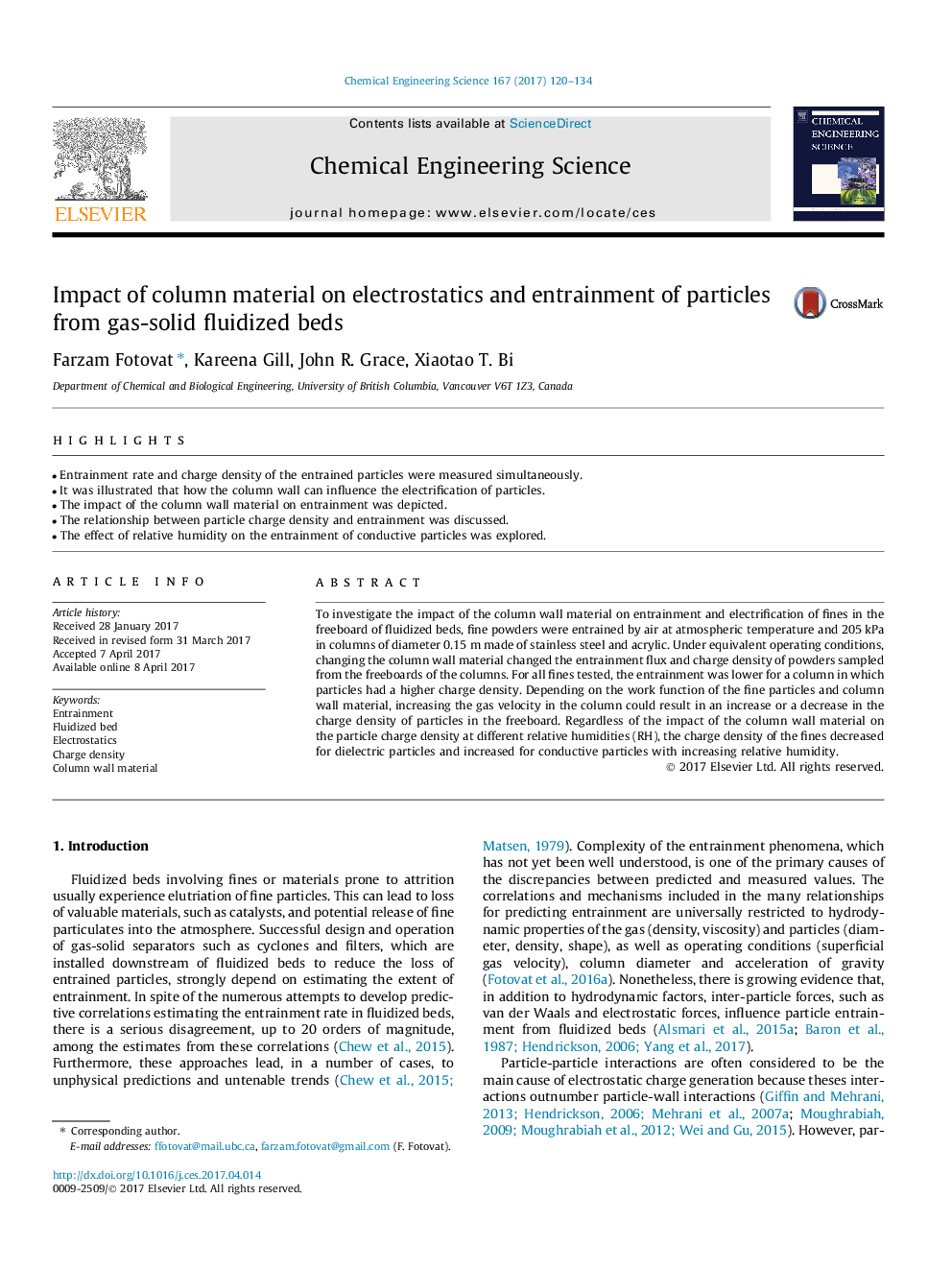| Article ID | Journal | Published Year | Pages | File Type |
|---|---|---|---|---|
| 6467359 | Chemical Engineering Science | 2017 | 15 Pages |
â¢Entrainment rate and charge density of the entrained particles were measured simultaneously.â¢It was illustrated that how the column wall can influence the electrification of particles.â¢The impact of the column wall material on entrainment was depicted.â¢The relationship between particle charge density and entrainment was discussed.â¢The effect of relative humidity on the entrainment of conductive particles was explored.
To investigate the impact of the column wall material on entrainment and electrification of fines in the freeboard of fluidized beds, fine powders were entrained by air at atmospheric temperature and 205Â kPa in columns of diameter 0.15Â m made of stainless steel and acrylic. Under equivalent operating conditions, changing the column wall material changed the entrainment flux and charge density of powders sampled from the freeboards of the columns. For all fines tested, the entrainment was lower for a column in which particles had a higher charge density. Depending on the work function of the fine particles and column wall material, increasing the gas velocity in the column could result in an increase or a decrease in the charge density of particles in the freeboard. Regardless of the impact of the column wall material on the particle charge density at different relative humidities (RH), the charge density of the fines decreased for dielectric particles and increased for conductive particles with increasing relative humidity.
